_lowres.jpg)
Back
Tristaniopsis obovata (Benn.) Peter G.Wilson & J.T.Waterh.
| Family Name: | Myrtaceae |
| Common Name: | Sea Tristania, Pelawan-pelawan |
Tristaniopsis obovata, commonly known as Pelawan-pelawan, is a critically endangered tree in Singapore. Its distinctive flaky bark results as outer layers of the bark peel off, and the reddish-brown inner bark becomes exposed. Over time, the young bark transitions through a spectrum of colours from brown to grey, resulting in a unique mottling pattern.
Name
Classifications and Characteristics
| Plant Division | Angiosperms (Flowering Seed Plants) |
|---|---|
| Plant Growth Form | Tree (Big (>30m)) |
| Lifespan (in Singapore) | Perennial |
| Mode of Nutrition | Autotrophic |
| Plant Shape | Irregular |
| Maximum Height | 45 m |
Biogeography
| Native Distribution | Peninsular Malaysia, Singapore, Sumatra, Riau Archipelago and Borneo |
|---|---|
| Native Habitat | Terrestrial, Shoreline |
| Preferred Climate Zone | Tropical |
| Local Conservation Status | Native to Singapore (Critically Endangered (CR)) |
Description and Ethnobotany
| Growth Form | It is a tree, up to 45 m tall, but in Singapore, it is seldom 10 m or taller. |
|---|---|
| Trunk | Its trunk has flaky bark that are orange, grey to greenish. |
| Foliage | Its alternate, stalked leaves have thick leathery leaf blades that are narrowly obovate, and 5-10 by 1.8-4.5 cm. |
| Flowers | Its small, musky-scented, white-petalled flowers develop in clusters that are 2.5-5 cm long. |
| Fruit | Its capsule fruits are 6 by 5-6 mm, and release many flat seeds when they split open into three parts when ripe. |
| Habitat | It grows on islands, and rocky headlands. |
| Cultivation | It can be propagated by seed. |
| Etymology | Latin Tristaniopsis, commemorating Marquess de Tristan (1776–1861), a French botanist; Latin obovata, obovate, referring to the shape of the leaves. |
Landscaping Features
| Landscaping | It is suitable for streetscapes, parks and gardens for its bushy form, colourful bark, and attractive leaves. |
|---|---|
| Desirable Plant Features | Ornamental Foliage, Ornamental Trunk, Ornamental Form |
| Landscape Uses | Suitable for Roadsides, Parks & Gardens, Small Gardens, Coastal |
Fauna, Pollination and Dispersal
| Pollination Method(s) | Biotic (Fauna) |
|---|---|
| Seed or Spore Dispersal | Abiotic |
Plant Care and Propagation
| Light Preference | Full Sun |
|---|---|
| Water Preference | Moderate Water |
| Plant Growth Rate | Moderate |
| Rootzone Tolerance | Moist Soils, Well-Drained Soils, Saline Soils / Salt Spray, Fertile Loamy Soils |
| Propagation Method | Seed |
Foliar
| Foliage Retention | Evergreen |
|---|---|
| Mature Foliage Colour(s) | Green |
| Mature Foliage Texture(s) | Leathery |
| Prominent Young Flush Colour(s) | Orange |
| Foliar Type | Simple / Unifoliate |
| Foliar Arrangement Along Stem | Alternate |
| Foliar Attachment to Stem | Petiolate |
| Foliar Shape(s) | Non-Palm Foliage (Obovate) |
| Foliar Venation | Pinnate / Net |
| Foliar Margin | Entire |
Floral (Angiosperm)
| Flower & Plant Sexuality | Bisexual Flowers |
| Flower Colour(s) | White |
|---|---|
| Flower Grouping | Cluster / Inflorescence |
| Flower Location | Axillary |
| Flower Symmetry | Radial |
Fruit, Seed and Spore
| Mature Fruit Colour(s) | Brown, Orange |
|---|---|
| Fruit Classification | Simple Fruit |
| Fruit Type | Dehiscent Dry Fruit , Capsule |
Image Repository
Others
| Master ID | 1944 |
|---|---|
| Species ID | 3236 |
| Flora Disclaimer | The information in this website has been compiled from reliable sources, such as reference works on medicinal plants. It is not a substitute for medical advice or treatment and NParks does not purport to provide any medical advice. Readers should always consult his/her physician before using or consuming a plant for medicinal purposes. |

_lowres.jpg)
_lowres.jpg)
_lowres.jpg)
_lowres.jpg)
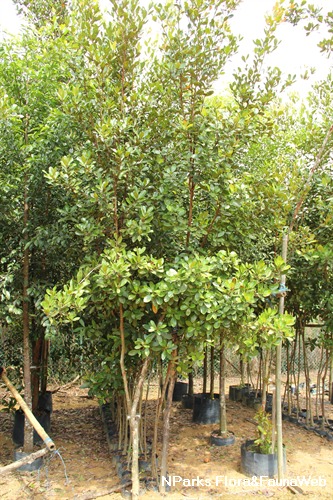
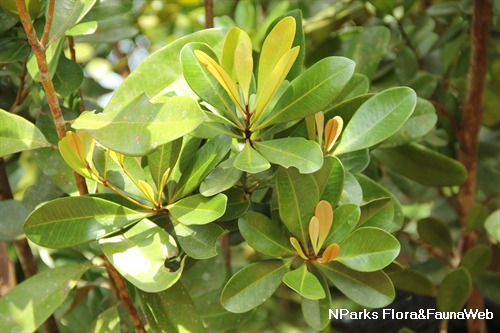
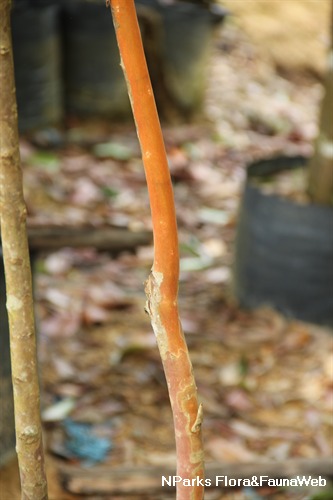
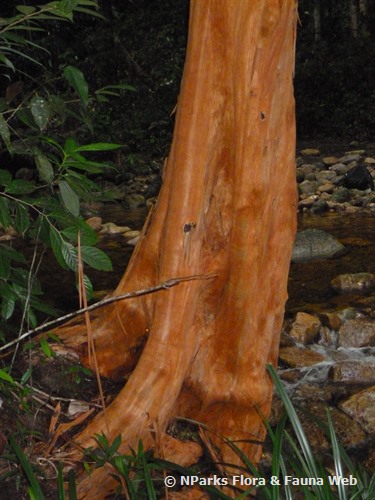
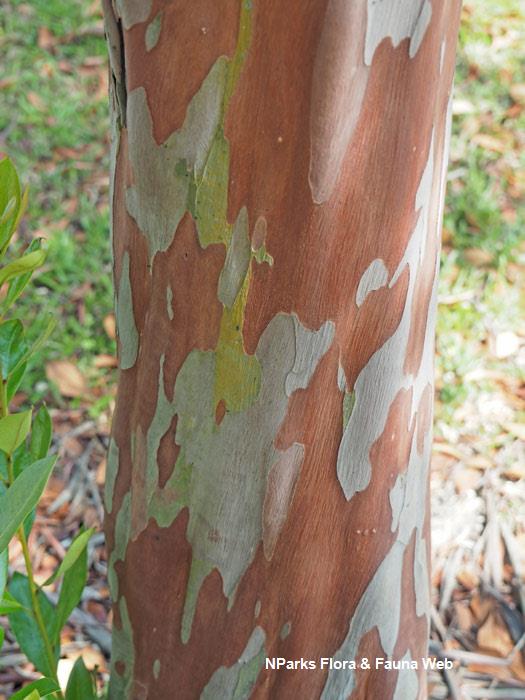
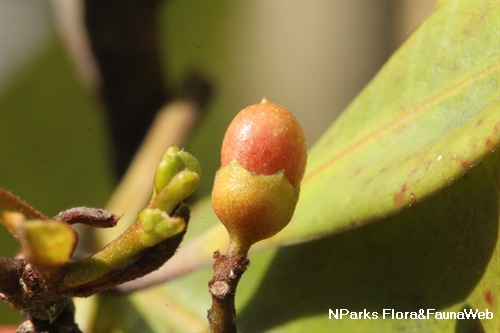
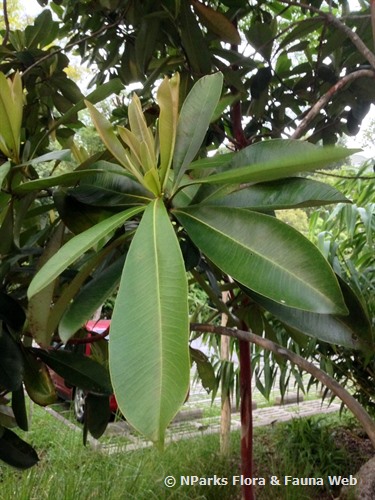
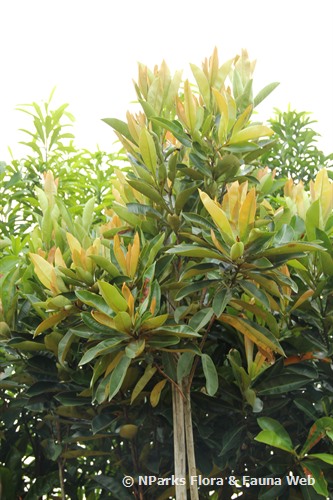
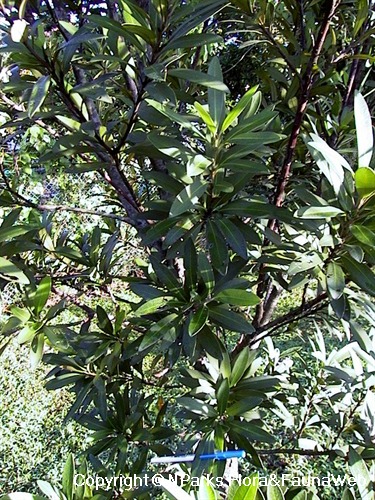
_lowres.jpg)